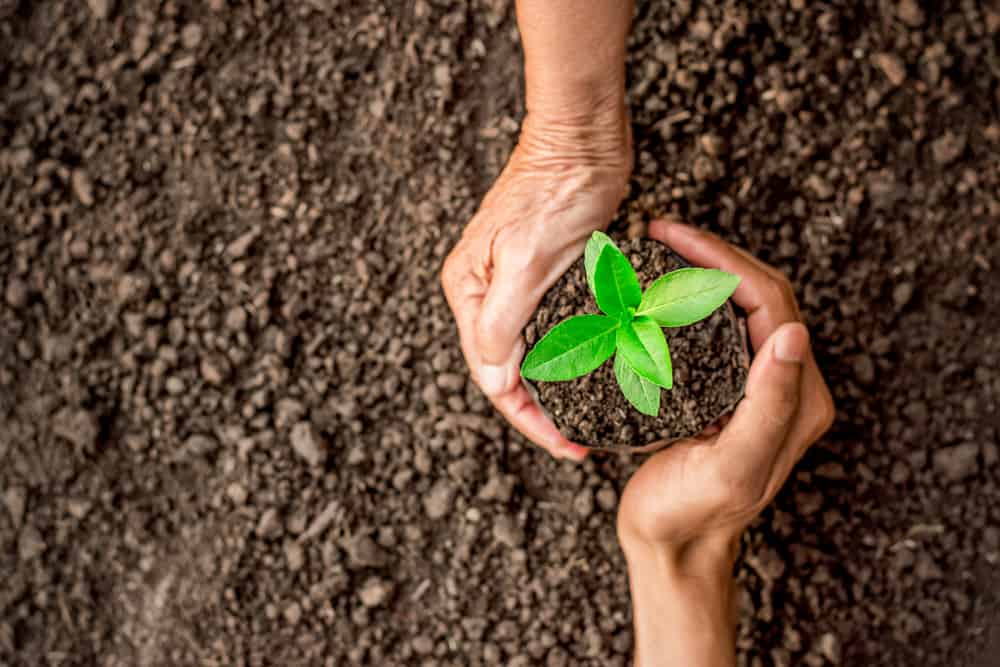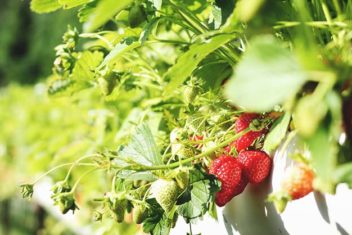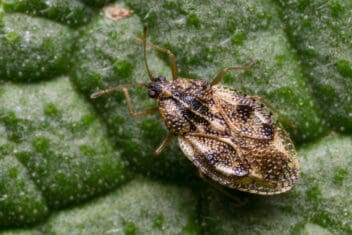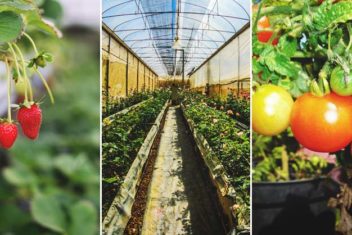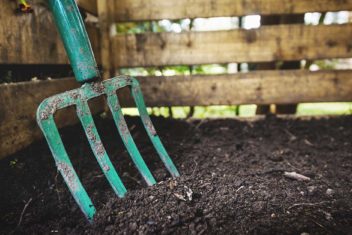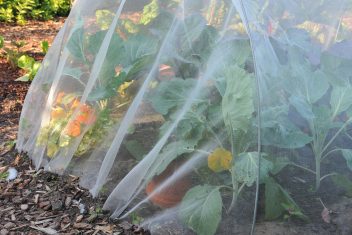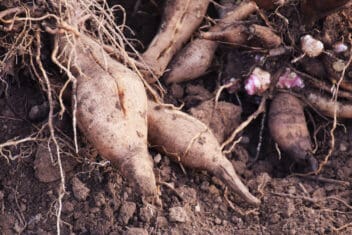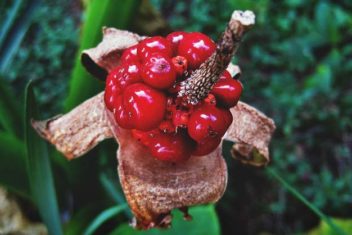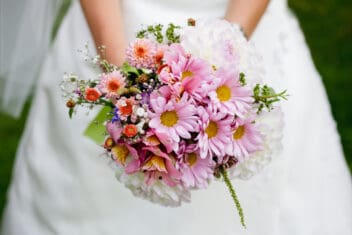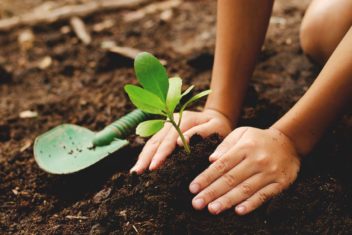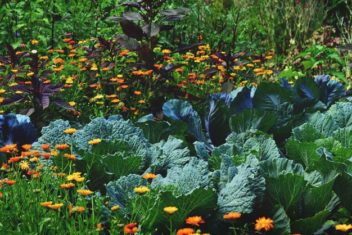Few things compare to the joy gardeners feel when their seeds germinate. Watching veggie seedlings unfurl and stretch up into the spring sunshine brings joy to our hearts every single time. This is why it’s so devastating when and if they suddenly fail to thrive.
Below are 12 of the most common causes of seedling failure, and how to either prevent them, or catch them in time to save your plant babies.
1. Damping-Off Disease
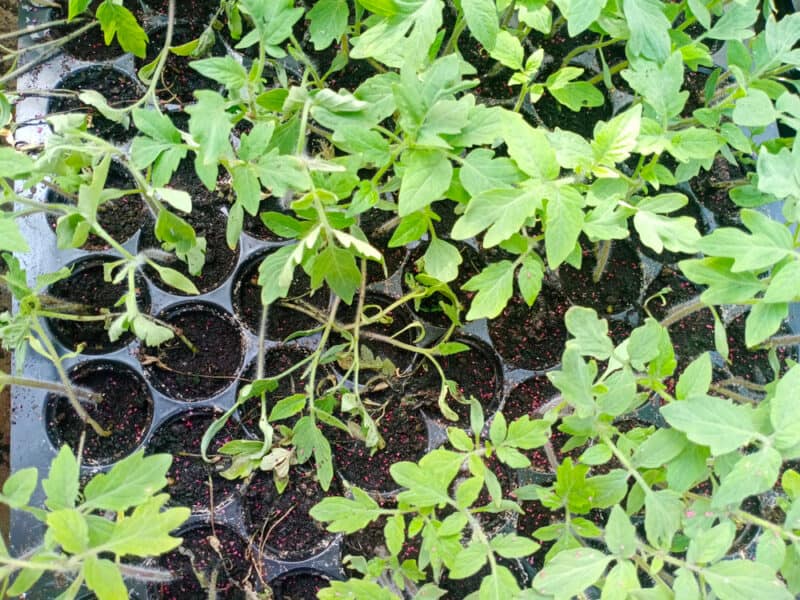
If your veggie seedlings start out looking healthy and then fall over, you may be dealing with damping-off disease. This is caused by a variety of soil-borne pathogens (including Fusarium, Alternaria, and Botrytis, to name a few), which destroy the plants’ root cell walls, so they wither and die.
These pathogens thrive in cool, damp soil. As such, you can avoid your plants being affected by this issue by using a few different techniques:
- Start your seedlings in sterile medium rather than standard garden soil.
- Never take soil from your outdoor garden to start seeds indoors.
- Sterilize all your equipment. Whether you’re re-using seed trays and pots from last year or simply using your tried-and-true garden tools, sterilize everything properly beforehand. Wash it all in hot, soapy water, and give it a soak in hot water with some added bleach for good measure. This should kill off any pathogens that may still be hiding in nooks and crannies.
2. Insufficient Ventilation
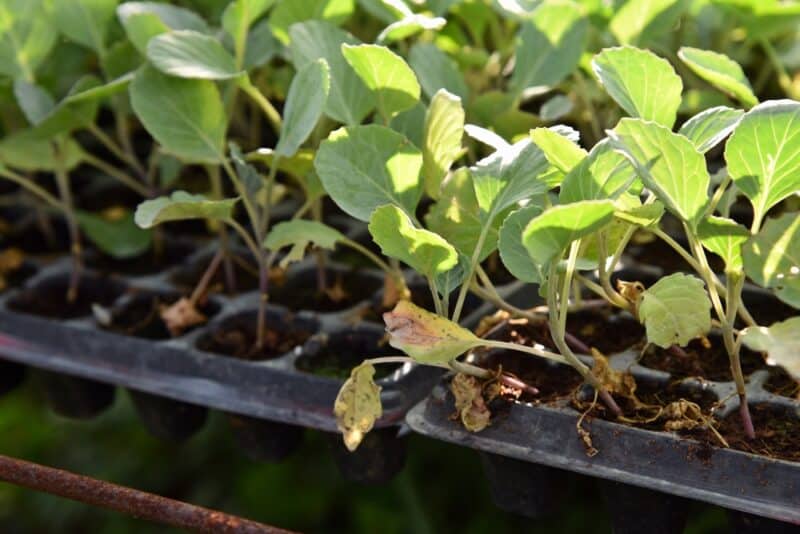
This often happens when people grow their plants inside plastic domes or countertop greenhouses. While these are handy to prevent pets from getting to the seedlings, they can be devastating when it comes to airflow.
If your seedlings look wilty, remove their dome covers so they can breathe. Alternatively, if you’re worried about pets or kids getting to the veggie seedlings, you can punch more holes in the dome. Use a plastic punch or a knife and double the number of ventilation holes already in the dome before reattaching it.
3. Trauma
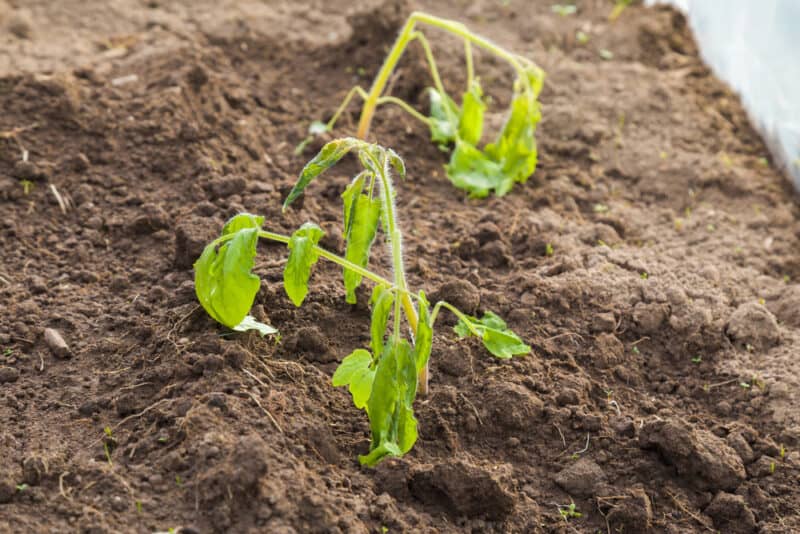
This might seem a bit dramatic, but it happens! I had given a friend of mine a huge tray of vibrant, healthy tomato seedlings, and she called to tell me that they had all died a week later.
It turned out that her husband had been spraying the seedlings with a hose every single day! The pressure from the hose, plus the weight of the water on their little frames proved to be too damaging, and they all died.
Over-watering (especially from above rather than at soil level) is a common cause, but so is attempting to harden them outside before the time is right.
Some people are so eager to harden off veggie seedlings that they’ll do so before they’re large enough to withstand the shock. Alternatively, they might put them out before the weather has warmed enough, so their babies die from cold exposure.
4. Incorrect Soil Composition
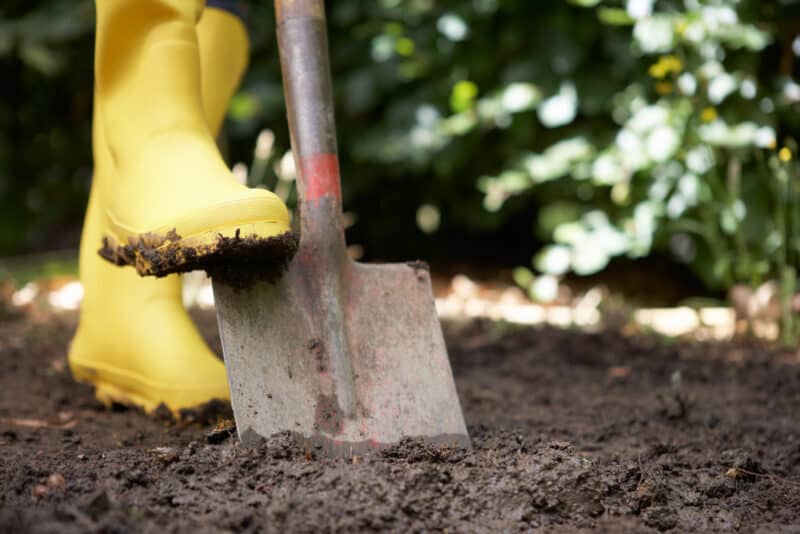
In addition to potentially carrying harmful pathogens, soil can also prevent seedlings from thriving. For example, their teensy little roots aren’t strong enough to push through anything with a high clay content. Alternatively, soil with too much sand may not retain enough water to sustain life.
This is another reason why it’s so essential to start seeds in a growing medium rather than standard yard soil.
5. Nutrient Deficiencies
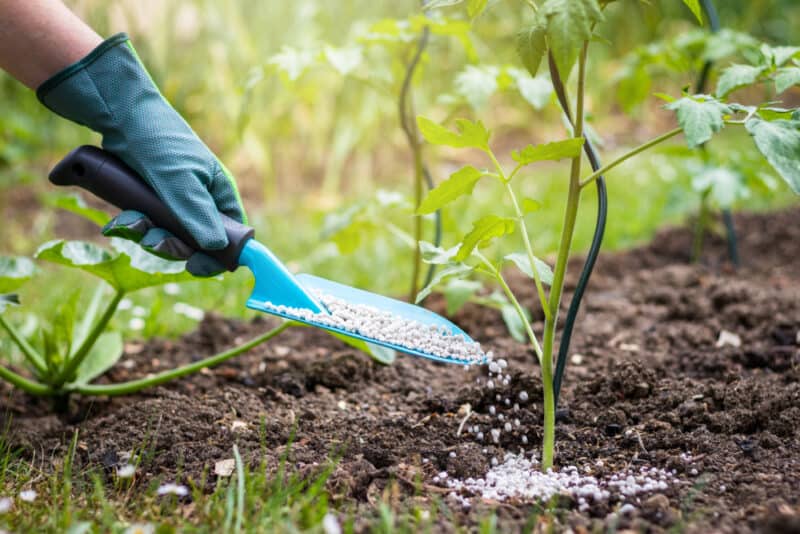
Veggie seedlings need a fair amount of nutrition to grow into vigorous, healthy plants. If they don’t get enough, their growth can be stunted, or their leaves may become discolored. Instead of vibrant, green growth, you’ll get pallid, yellow offerings.
You can counteract this by offering them some fertilizer once they have three sets of leaves. Diluted fish emulsion (either homemade or commercial) is a good option. Alternatively, you can feed them with compost tea.
6. Fertilizer Burn (Too Many Nutrients)
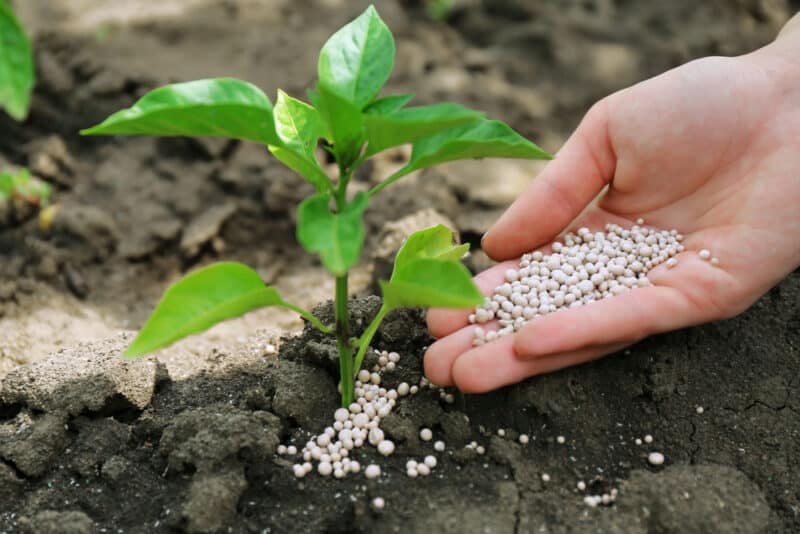
In contrast to a lack of nutrients, your little sprouting friends can also fail to thrive because they’ve been given too much fertilizer. In a case like this, there are more nutrients in the soil than they can absorb. As a result, they get “chemical burn” on their roots or stems.
You can avoid this issue by not working any slow-release fertilizer into the soil where you plant your seeds. Use organic rather than chemical products, and don’t feed them any fertilizer until they’ve developed at least two sets of leaves.
If you feel your plants need more nutrients, follow the instructions on the fertilizer container to the letter. In fact, you can even dilute it a bit more to ensure that you don’t overwhelm your babies.
7. Wrong Lighting (Too Much or Too Little)
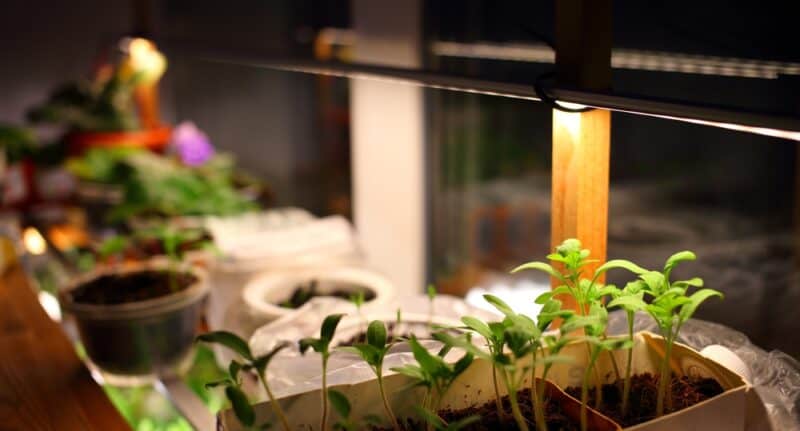
Veggie seedlings are even more delicate than they appear. As such, the wrong lighting—either too much or too little—can damage them.
Seedlings that don’t get enough light can fail to thrive. They’ll be smaller than they should be, their leaves won’t develop properly, and they may stop growing.
In contrast, seedlings that get too much light may develop leaves faster than their stems can support. Additionally, they may burn or dehydrate from too much direct light exposure.
Aim for a place where your seedlings will get about six hours of indirect natural light. Once they’ve grown hardy enough to withstand more of it, expose them to direct light bit by bit.
8. Overwatering
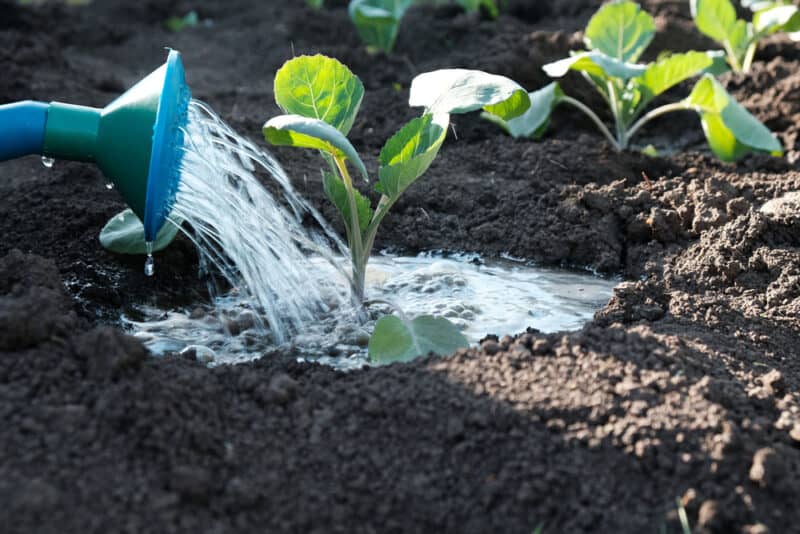
Seedlings require water to grow, but too much water can kill them. This is because the roots can’t absorb enough oxygen if there’s too much water in the soil. As such, they quite literally drown and start to decay.
Once that rot starts, the seedlings are pretty much impossible to save. Furthermore, the rot can spread and kill surrounding plants too!
Overwatering can also lead to mildew growth, which can be devastating to any plants in the vicinity.
Aim to water your veggie seedlings when the top 1/2 inch (1 cm) of soil feels dry to the touch. Poke your index fingertip in, and if you can feel moisture before your nail is buried, they’re still okay. Their soil should be moist but not sodden.
If your seedlings have been cultivated in trays, consider watering them from below. Simply pour the water into the holding tray beneath their cells. The soil will absorb just enough water for the roots to draw, without oversaturating. Alternatively, if you’ve planted directly into an outdoor garden, only water lightly at soil level every couple of days.
9. Underwatering

As with too much light or fertilizer, lack can be as damaging as overabundance.
If you don’t water your seedlings often enough, they can dehydrate and die. Water is essential for plants to live, as they require it for structural cell support (turgor), photosynthesis, and transpiration. Plants can’t survive without it any more than we can survive without breathing.
Check your plants’ soil at least once daily to ensure it always feels damp at the 1/2 inch depth. Check the soil immediately if your plants look like they’re keeling over. When you do offer them moisture, water them at the soil level instead of from above. This will prevent damage as well as fend off potential mildew.
10. Incorrect Temperature (Too Cold or Too Hot)
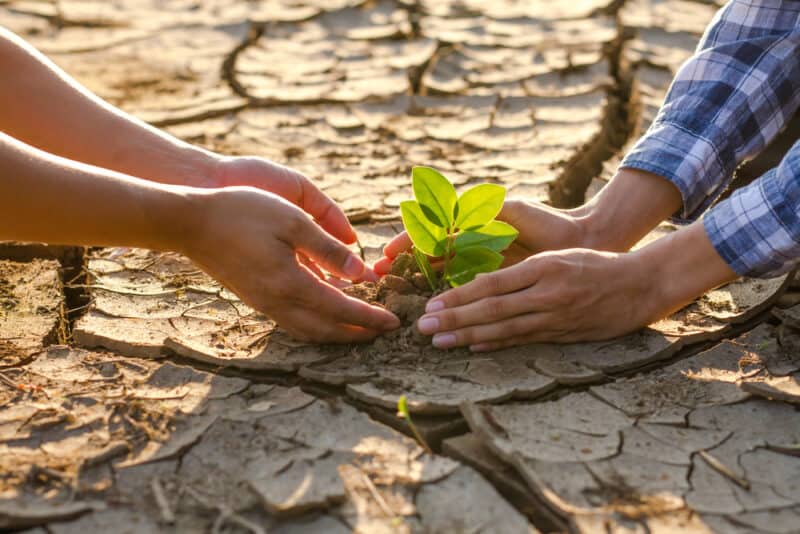
Your veggie seedlings may have difficulty thriving in less-than-ideal growing conditions. This often happens when people try to grow many different species in the same area instead of offering each species what it needs the most.
For example, plants like tomatoes or peppers need a lot of sunshine and surrounding warmth to thrive. In contrast, peas and kale will fail to thrive in those conditions: the peas may not germinate, and the kale can bolt overnight. They need a cooler environment with less direct light than the aforementioned nightshades.
Before you plant your seeds, read their packets to see their light and other environmental requirements. Then grow them in spots that are best suited to their individual needs.
11. Overcrowding
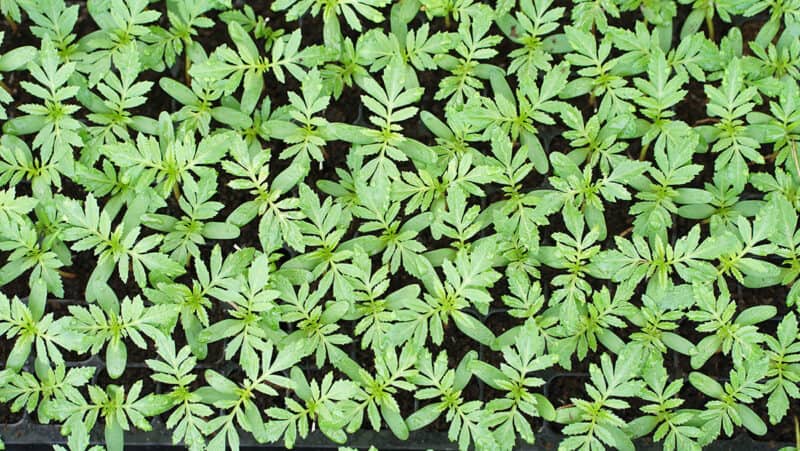
Have you ever seen a group of squirrels fight over a single peanut? It can get ugly. Similarly, if there are too many veggie seedlings trying to survive in a single space with limited nutrients, some will die.
This is because only so much nutrition is available to support all the life around it. Every single seedling is gobbling up everything it can to grow strong and tall. If there are too many in a tiny space, then one of three things can happen:
- One seedling thrives while the others fail
- All seedlings are weak and stunted
- Every seedling fails
If you knew for sure that all your seeds would germinate, then your best bet would be to plant one per cell. Considering that the average germination rate for a pack of fresh seeds is around 80%, it’s usually better to plant more than one per cell to make up for those that won’t sprout.
Overcrowding happens if and when more seeds sprout than you’d intended. As mentioned above, you can avoid this issue by sticking to the one seed per cell approach.
Alternatively, start the seeds in damp paper towels and only plant them in their growing medium once they’ve sprouted. As a final option, you can snip off the weaker, smaller stems at the soil level and allow the strongest, healthiest ones to mature.
12. Animal or Insect Interference
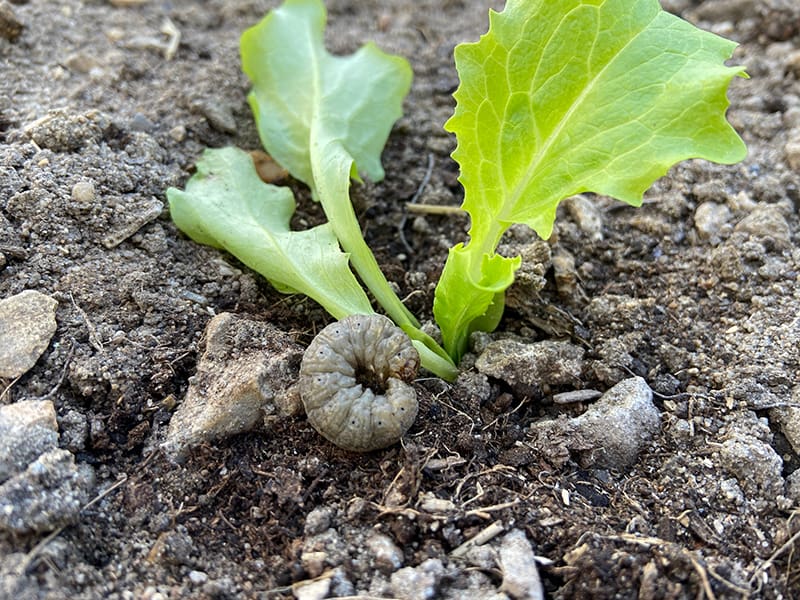
I once lost an entire crop of corn seedlings to cutworms. Another time, a marmot ate all the baby herbs in my potager bed, smirking at me while stuffing her face. I’ve lost veggie seedlings to predation (primarily birds and cats, but also dogs and rabbits), and to house mice who decided to feast on the sprouts at night.
In addition to the critters mentioned above, seedlings can be killed by aphids, spider mites, flea beetles, cabbage white butterflies, whiteflies, leaf miners, and many other insects. If you sow seeds directly outside, they may also be gobbled up by wild mice, shrews, voles, various birds, and even deer.
Your best bet to prevent animals and insects from annihilating your veggie seedlings is to protect the sprouts as they grow.
If you have a greenhouse or tunnel, start your seeds inside it instead. Aim for cloches, domes, or countertop greenhouses if you start seeds indoors. Provided that they have sufficient ventilation for airflow and evaporation, they should keep your plants protected while they’re tiny and vulnerable.
A Few Last Tips
Whenever possible, choose seeds that are resistant to various pathogens. Veggie seedlings have a higher chance of thriving if they have a natural defense against various mildews and rots.
Always start seeds in a growing medium rather than soil, and check them daily to determine if they need more or less light, water, or food. With the proper care, your little plant friends will grow into vigorous, healthy plants that’ll help you and your family stock your table (and pantry) well.
